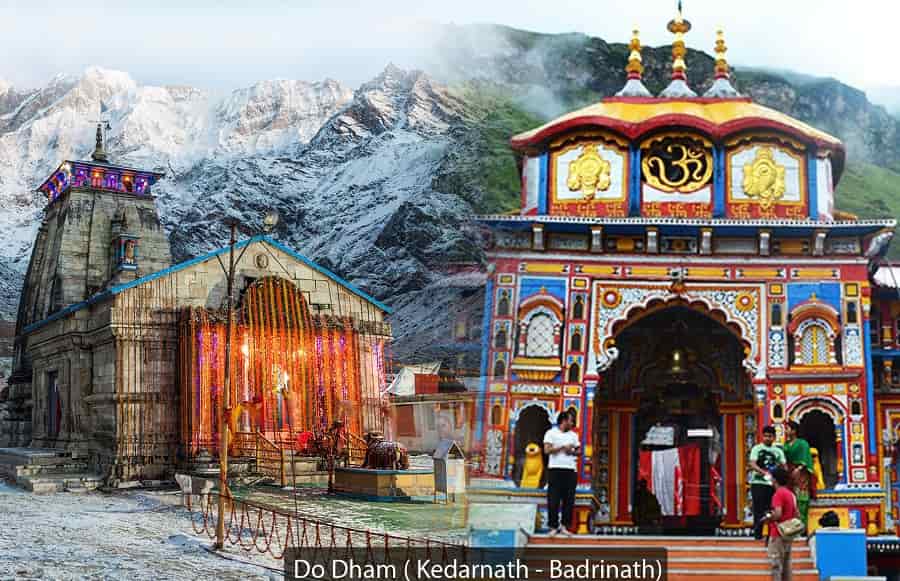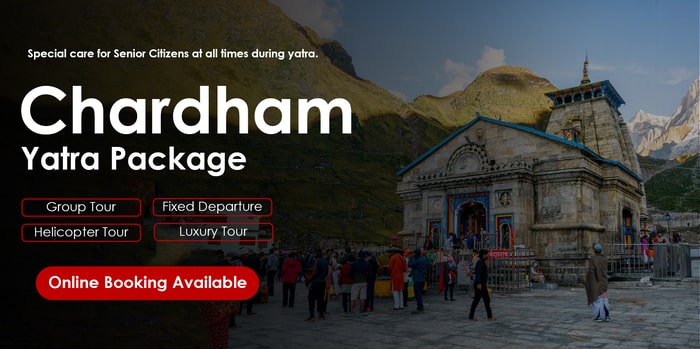Planning a pilgrimage to the sacred sites of Badrinath and Kedarnath from Haridwar entails a journey deeply entrenched in religious significance and natural splendor. These two revered temples, nestled amidst the awe-inspiring Himalayan peaks of Uttarakhand, beckon devotees from far and wide, offering not only spiritual solace but also a chance to immerse oneself in the breathtaking beauty of the region. In this comprehensive guide, we will delve into every aspect of planning a Badrinath Kedarnath Yatra from Haridwar, providing detailed information on itinerary, transportation, accommodations, essential preparations, the best time to visit, significant landmarks en route, and more.

Introduction to Badrinath and Kedarnath
Badrinath and Kedarnath, nestled in the Garhwal region of Uttarakhand, are two of the holiest pilgrimage sites in Hinduism. Badrinath, dedicated to Lord Vishnu, and Kedarnath, dedicated to Lord Shiva, hold immense religious significance and draw millions of devotees annually seeking divine blessings and spiritual rejuvenation. The temples’ serene ambiance, set against the backdrop of snow-capped peaks and gushing rivers, creates an atmosphere of unmatched tranquility.
Importance of the Yatra
Embarking on the Badrinath Kedarnath Yatra from Haridwar is not merely a journey; it is a sacred pilgrimage that holds profound religious significance in Hindu culture. It is believed that undertaking this pilgrimage cleanses the soul, absolves one of past sins, and brings spiritual fulfillment. For devout Hindus, it is a once-in-a-lifetime opportunity to pay homage to the divine deities and seek their blessings for prosperity and well-being.
Route and Connectivity
Haridwar, located in the heart of Uttarakhand, serves as the gateway to the Badrinath Kedarnath Yatra. It is well-connected to major cities and towns in North India and Uttarakhand via road, rail, and air. From Haridwar, pilgrims can choose from various transportation options, including government-run buses, private taxis, and shared jeeps, to reach the pilgrimage sites. The journey from Haridwar to Badrinath and Kedarnath is a scenic drive, offering panoramic views of the Himalayan landscape and picturesque towns en route.
Itinerary for Badrinath Kedarnath Yatra from Haridwar
A well-planned itinerary is essential for a successful and fulfilling pilgrimage experience. Here’s a suggested itinerary for the Badrinath Kedarnath Yatra from Haridwar:
Day 1: Haridwar to Rishikesh
- Start your journey from Haridwar to Rishikesh, often referred to as the “Yoga Capital of the World.”
- Visit the sacred ghats along the banks of the Ganges River and attend the evening Ganga Aarti at Parmarth Niketan.
- Overnight stay in Rishikesh.
Day 2: Rishikesh to Guptkashi
- Depart from Rishikesh and proceed towards Guptkashi.
- En route, make a stop at Devprayag, the confluence of the Alaknanda and Bhagirathi rivers.
- Check-in at your accommodation in Guptkashi and relax.
- Overnight stay in Guptkashi.
Day 3: Guptkashi to Kedarnath
- After breakfast, travel to Gaurikund, the base camp for the trek to Kedarnath.
- Begin the trek to Kedarnath or opt for a pony/palki ride.
- Upon reaching Kedarnath, visit the temple and attend the evening Aarti.
- Overnight stay in Kedarnath.
Day 4: Guptkashi to Badrinath
- Depart from Guptkashi and journey towards Badrinath.
- En route, make stops at significant landmarks like Vishnuprayag.
- Arrive in Badrinath and check-in at your accommodation.
- Visit the Badrinath Temple and take a holy dip in the Tapt Kund.
- Overnight stay in Badrinath.
Day 5: Badrinath to Rudraprayag
- Depart from Badrinath and proceed towards Rudraprayag.
- En route, make stops at significant landmarks like Joshimath and Nandprayag.
- Arrive in Rudraprayag and check-in at your accommodation.
- Explore the town and visit the Sangam of Alaknanda and Mandakini rivers.
- Overnight stay in Rudraprayag.
Day 6: Rudraprayag to Haridwar
- Start your journey back to Haridwar from Rudraprayag.
- En route, make stops at significant landmarks like Devprayag.
- Arrive in Haridwar and bid farewell to the Himalayas.
- Departure or extension of the journey as per your preference.
Accommodations
During the Badrinath Kedarnath Yatra, pilgrims have a range of accommodation options to choose from, catering to different budgets and preferences. From budget lodges and guesthouses to deluxe hotels and Swiss tents, there are accommodations available at various stops along the pilgrimage route. It is advisable to book accommodations in advance, especially during the peak pilgrimage season, to ensure a comfortable stay.
Essential Preparations
A successful pilgrimage to Badrinath and Kedarnath requires careful planning and preparation. Here are some essential preparations to consider:
- Biometric Registration: Pilgrims are required to undergo biometric registration for the Badrinath and Kedarnath Yatra, which can be done online or at designated registration centers.
- Documentation: Carry essential documents such as photo identification, Aadhar card, passport, and vaccination certificates.
- Clothing and Gear: Pack appropriate clothing and gear for varying weather conditions, including warm jackets, gloves, woolen socks, and sturdy shoes.
- Medications: Carry a first aid kit and necessary medications for common ailments such as fever, cold, headache, and altitude sickness.
Best Time to Visit
The best time to undertake the Badrinath Kedarnath Yatra is during the summer and early autumn months, from May to October. During this time, the weather is pleasant, and the temples remain accessible to pilgrims. It is advisable to avoid the monsoon season due to the risk of landslides and flooding.
Significant Landmarks En Route
The journey from Haridwar to Badrinath and Kedarnath is dotted with several significant landmarks and scenic spots that add to the pilgrimage experience. Some noteworthy stops along the route include Devprayag, Rudraprayag, Vishnuprayag, and Gaurikund, each offering breathtaking views and spiritual vibes.
Conclusion
Embarking on the Badrinath Kedarnath Yatra from Haridwar is a profound spiritual journey that promises divine blessings, inner peace, and a deeper connection with the divine. With meticulous planning, adequate preparations, and a devout heart, pilgrims can undertake this sacred pilgrimage and experience the transformative power of faith amidst the majestic Himalayas. May the journey be filled with spiritual enlightenment, divine grace, and everlasting memories for all who embark on it.
Suggested Tour:




 Call
Call Enquiry
Enquiry